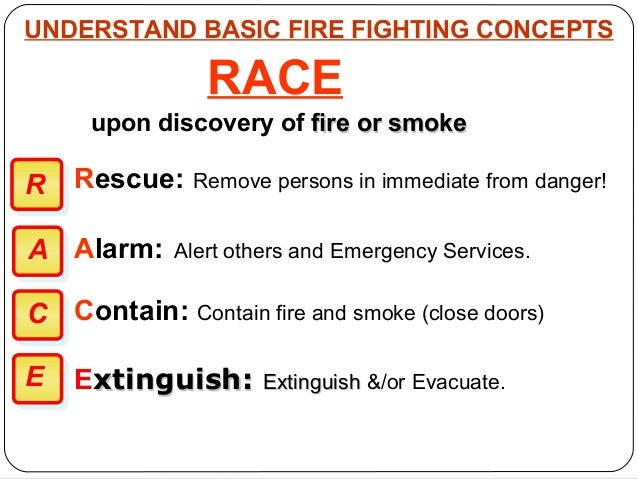
When involving children in fire drills, it is important to allow them to become proficient in fire escape planning and practice before conducting a drill at night while they are sleeping. It is crucial to include arrangements in the plan for individuals with disabilities who may require special assistance. Practice your home fire escape plan at least twice a year, ensuring that the drills are as realistic as possible. Inform the fire department if anyone is missing.īe aware of specific fire safety protocols for high-rise and apartment buildings.īy following these guidelines and being prepared for a real fire emergency, you can increase your chances of safely escaping and minimize potential harm. Once outside, do not reenter the burning building under any circumstances. Inform guests or visitors about your family's fire escape plan, and when staying overnight at others' homes, inquire about their escape plan or offer assistance in creating one.
#R a c e fire drill windows#
If your home has security bars on windows or doors, ensure they have emergency release devices for quick evacuation. Memorize the emergency phone number of the fire department and teach it to all household members.Īssign someone to assist infants, older adults, or family members with mobility limitations during fire drills and emergencies. Make sure your street number is clearly visible from the road for easy identification by emergency personnel. Remember, everyone’s safety should be the top priority in a fire, so don’t put yourself at risk if it isn’t necessary.Gather everyone in your household and walk through the plan together.Įnsure that escape routes are clear and that doors and windows can be easily opened.ĭesignate a safe meeting place outside, such as a neighbor's house, a light post, a mailbox, or a stop sign. Those who aren’t confident in their extinguishing abilities or simply aren’t near one should just focus on evacuating the building.

If you do happen to see others, focus on helping those who are injured or are otherwise unable to get to safety.

Sometimes, helping others can bring a sense of calmness to a chaotic situation, which can result in better decision-making during an emergency. Not only is it important to make sure that you have a clear escape route, but you should also see if anyone else needs assistance getting out of the building. Let’s take a closer look at the RACE acronym below.Īfter you’ve been alerted to the presence of a fire, you should immediately stop what you’re doing and take a quick scan around the room. RACE, for example, stands for Remove/Rescue, Alarm/Alert, Confine/Contain, and Extinguish/Evacuate, and this is exactly what you need to do if you encounter a fire. This panic is completely understandable, so experts have created certain acronyms to help make fire safety best practices easier to remember. And who can blame them? A fire is a dangerous situation! It can be absolutely overwhelming when your safety is at risk, which can make it difficult to remember and follow proper fire safety procedures. Some people start to panic when they come face-to-face with the spreading smoke and flames. While it’s often a good idea to stay cool, calm, and collected whenever a fire breaks out, it’s not always a reality.


 0 kommentar(er)
0 kommentar(er)
